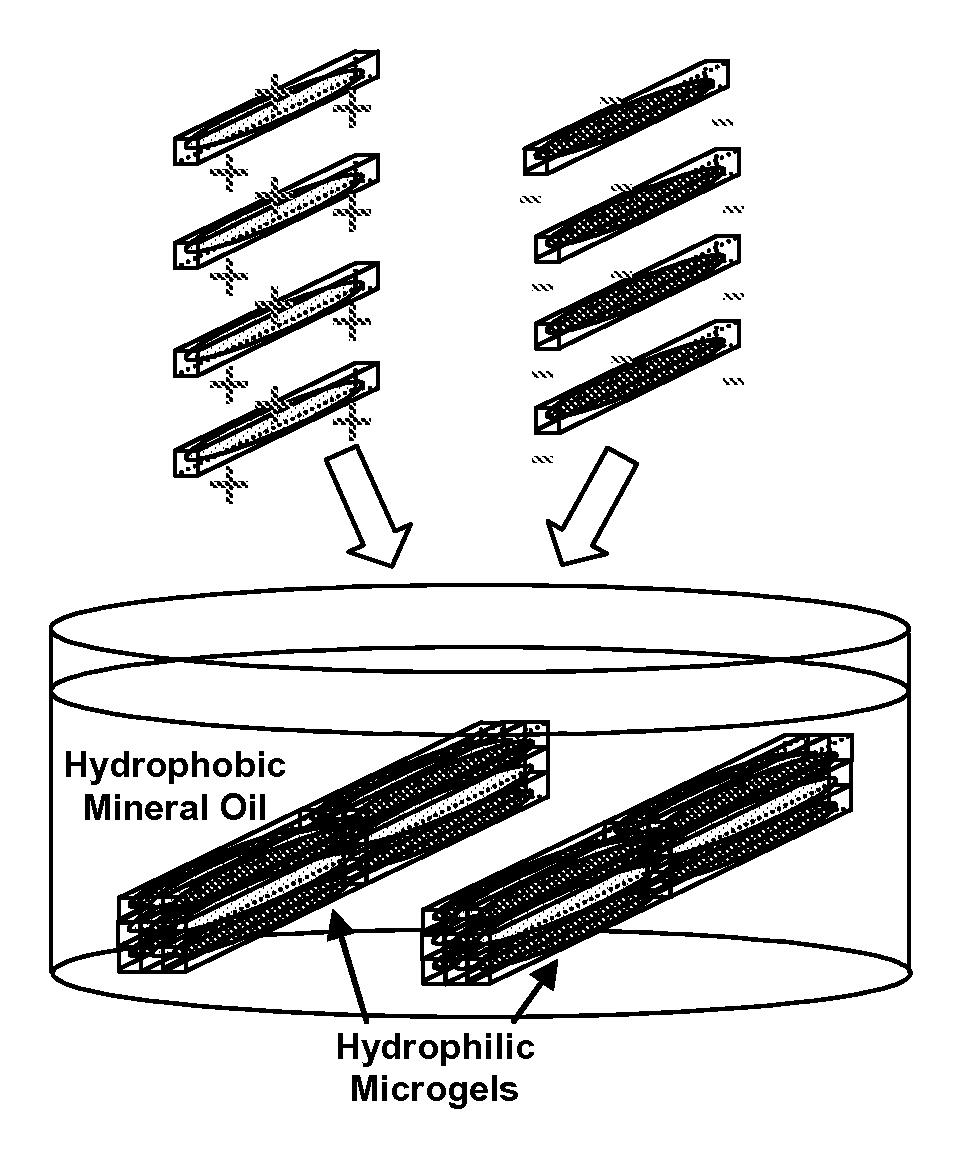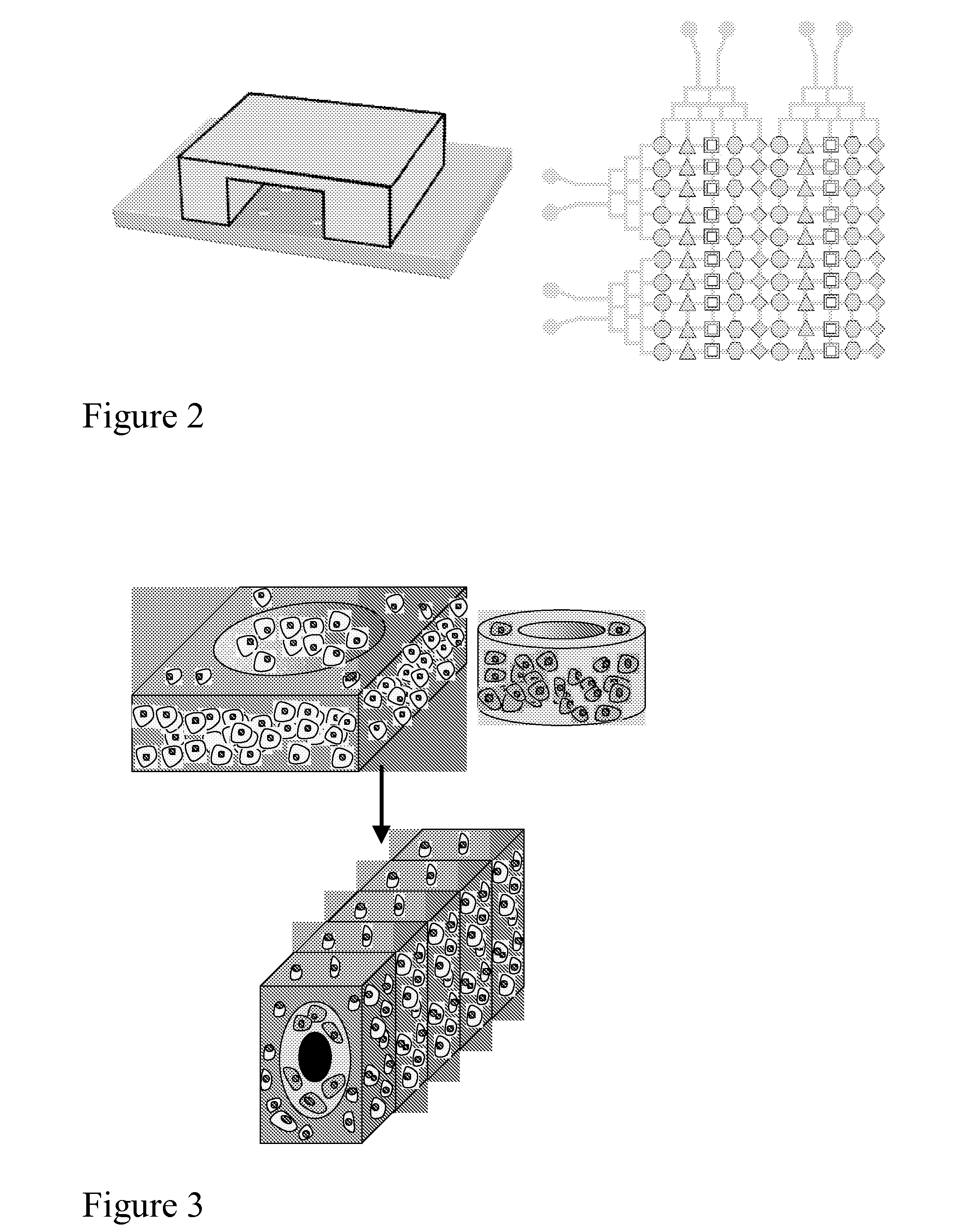Cell-Laden Hydrogels
a cell-laden hydrogel and gel technology, applied in the field of cell-laden hydrogels, can solve the problems of insufficient generation of human tissue transplantable tissues, and shorten the supply of human tissues
- Summary
- Abstract
- Description
- Claims
- Application Information
AI Technical Summary
Benefits of technology
Problems solved by technology
Method used
Image
Examples
example 1
Micromolding of Shape-Controlled, Harvestable Cell-Laden Hydrogels
[0186]Encapsulation of mammalian cells within hydrogels has great utility for a variety of applications ranging from tissue engineering to cell-based assays. This example presents a technique to encapsulate live cells in three-dimensional (3D) microscale hydrogels (i.e. “microgels”) of controlled shapes and sizes in the form of harvestable free standing units. Cells were suspended in methacrylated hyaluronic acid (MeHA) or poly(ethylene glycol)diacrylate (PEGDA) hydrogel precursor solution containing photoinitiator, micromolded using a hydrophilic poly(dimethylsiloxane) (PDMS) stamp, and crosslinked using ultraviolet (UV) radiation. By controlling the features on the PDMS stamp, the size and shape of the molded hydrogels were controlled. Cells within microgels were well distributed and remained viable. These shape-specific microgels could be easily retrieved, cultured, and potentially assembled to generate structures ...
PUM
| Property | Measurement | Unit |
|---|---|---|
| LCST | aaaaa | aaaaa |
| temperature | aaaaa | aaaaa |
| temperature | aaaaa | aaaaa |
Abstract
Description
Claims
Application Information
 Login to View More
Login to View More - R&D
- Intellectual Property
- Life Sciences
- Materials
- Tech Scout
- Unparalleled Data Quality
- Higher Quality Content
- 60% Fewer Hallucinations
Browse by: Latest US Patents, China's latest patents, Technical Efficacy Thesaurus, Application Domain, Technology Topic, Popular Technical Reports.
© 2025 PatSnap. All rights reserved.Legal|Privacy policy|Modern Slavery Act Transparency Statement|Sitemap|About US| Contact US: help@patsnap.com



